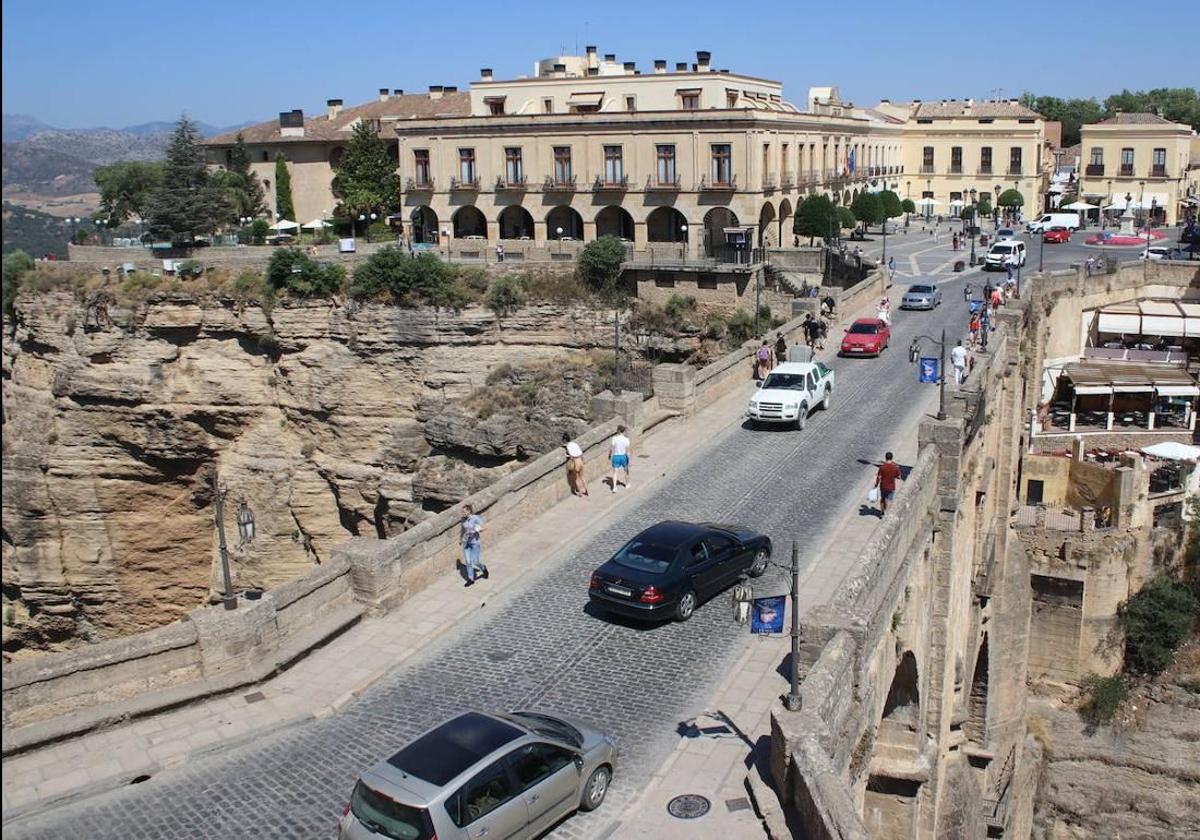

Sections
Highlight

Vanessa Melgar
Monday, 13 January 2025
Ronda town hall, headed by mayor María de la Paz Fernández of the PP party, has postponed until February the start of the town's new traffic regulation for its New Bridge ('Puente Nuevo'), specifically where Calle Armiñán comes up from the San Francisco district to meet Calle Virgen de la Paz and on up to Alameda del Tajo park. This is where the famous bridge monument is located. The intention is to alleviate the current traffic flow and to contribute, in general, to improving mobility in the historic part of the town centre.
The measure is to prevent passage through the area to vehicles that are not fiscally domiciled in Ronda. In other words, only the owners of cars registered to pay the IVTM - the so-called car stamp - in Ronda can drive through that specific area.
The town hall announced several months ago that this measure would come into force in January of this new year. Town hall officials also made several appeals to drivers who, for various reasons, have their main residence in Ronda, yet do not have their vehicles registered in Ronda, urging them to go to the town hall to carry out this procedure.
The municipal authority is currently in the process of installing video surveillance cameras that will allow traffic to be monitored and controlled. The process was put out to tender for around 100,000 euros, including the installation of more cameras in other areas of Ronda to combat vandalism and fly tipping, among other antisocial behaviour.
Traffic slashed from 5,000 to 1,000 cars
The intention to alleviate the traffic on Puente Nuevo, Ronda's 237-year-old monument par excellence, has been a dream of different local governments in recent years.
Previously, under the previous local government led by PSOE, PA and IU party reps, the flow of traffic was restricted with daily times during which only Ronda residents and authorised vehicles of such as parents of schoolchildren attending in the area could circulate.
This partial closure caused great unrest in the southern part of Ronda town, especially in the San Francisco district, which argued that its residents were isolated and forced to use the ring road to get from one part of the town to the other, divided in two by the iconic gorge. The collective formed a local protest group, also pointing out that the ring road was not in good condition.
Two demonstrations and other protest actions were organised. The lobbying called for a town-planning alternative to the bridge.
Following the PP coming into power, the new governing team lifted the partial closure, promising the construction of a road in the Arroyo de Las Culebras area, a project that is still being processed and which has also met with the rejection of another residents' protest group due to the road's alleged negative impact on the natural environment.
Although not yet in operation, this new regulation to control traffic flow on the Puente Nuevo is now ready to go live, with the aim of reducing the number of vehicles per day from around 5,000 (with peaks of up to 7,000) to around 1,000.
Publicidad
Publicidad
Publicidad
Publicidad
Esta funcionalidad es exclusiva para suscriptores.
Reporta un error en esta noticia
Comentar es una ventaja exclusiva para registrados
¿Ya eres registrado?
Inicia sesiónNecesitas ser suscriptor para poder votar.